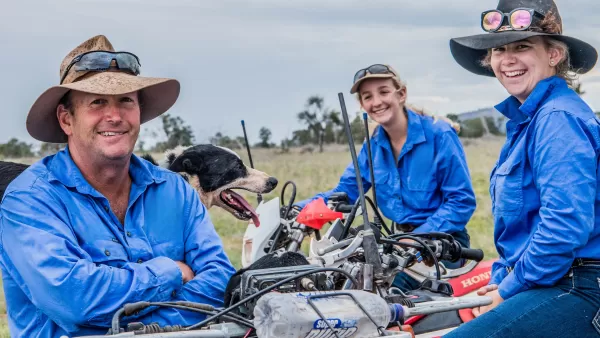Bundaberg Sugar Cane Farm
Energy Savings: 101% | Cost Savings: $6,835 | Capital Cost: $41,959 | CO2 Savings: 28.4 | Project Status: proposed
Industry:
Sugarcane
Location:
Wide Bay Burnett
Pump Type:
Bore
Irrigation Type:
Drip, Micro irrigation
Technology:
Irrigation and Pumps, Solar Power and Renewables
A sugarcane farming enterprise located in Bundaberg could benefit from a recent Energy Savers Audit. Farming requires constant decision making to maximise production and profit. Often irrigation systems are out of date and are in need of replacement to incorporate new technologies and updated knowledge.
The total area of cropping lands consists of 35.41 ha and is serviced by one pump that supplies water by underground mainline and trickle tape placed on the ground surface between each cane row. It has already been fitted with a Variable Speed Drive and with the connection to Tariff 33 prior to the audit, which has reduced energy usage from the previous 40kW to 22kW (45% reduction) and lowered cost per kWh from the previous operational average based on Tariff 65 of 28.60c/kWh to Tariff 33 rate of 19.268c/kWh (33% reduction).
The energy audit’s focus for this pump is on time efficient and cost-effective irrigation methods for a particular situation with the possibility of combining solar technology. The audit showed how the installation of a 30kW solar PV system to the existing pumping system can lead to energy and cost savings.
Table 1. Energy savings from audit recommendations
| Recommendation | Annual Energy Savings (kWh) | Annual Cost Savings ($) | Emission Savings (tCO2-e) | Capital Cost ($) | Payback Period (years) |
| 30 kW Solar Pump | 34,640 | 6,835 | 28.4 | 41,959 | 6.3 |
Energy consumption from the current site showed that a total of 34,032 kWh at a cost of $7,870 was used during the 2018-2019 period. Investigation into an alternative form of irrigation such as low pressure lateral move was considered however, with the limited area serviced full time by this pumping unit (17ha) and the cost of installing a low pressure unit there would be a very high cost to return ratio and is therefore unfeasible. The energy audit has recommended a 30kW solar array for this site, which will be connected to grid feed-in tariff (FIT) via a 25kW AC inverter. Current energy regulation allows for a feed-in supply of up 30kW per NMI. The pumping unit provides the annual irrigation demand for 17ha of trickle irrigated sugarcane and is used intermittently to irrigate (depending on the season) an additional 18ha. Estimates indicate that the 30kW of solar will further reduce daytime grid energy consumption by 99kWh per day and when the pumping system is not operating in the daytime, surplus solar production will feed in to the Ergon grid.
By installing the recommendation in the audit, the business could reduce energy consumption for pumping by 101%, considering the exports to the grid, and associated costs by 87%, with carbon emission savings of 28.4 tCO2–e per year, which will enhance the profitability and productivity of the farm.
Table 2. Pre and post audit energy consumption, costs and energy productivity savings
| Metric | Pre-Audit | Post-Audit | Reduction (%) |
| Energy Consumption (kWh) | 34,032 | -608 | 101 |
| Cost ($) | 7,870 | 1,035 | 87 |
| Energy Productivity (kWh/ha) | 961 | -17 | 101 |
An energy audit is a good investment
An energy audit is a great first step in moving a business towards a more efficient future by reducing energy use, costs and carbon emissions onsite.
The Energy Savers Plus Extension Program was delivered by the Queensland Farmers' Federation with support and funding from the Queensland Department of Energy and Public Works.

